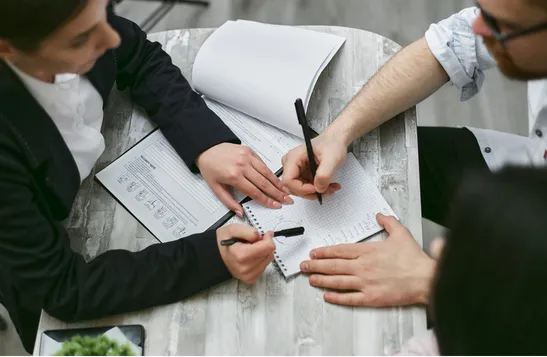Contact Us





Login/Register
Contact Us





Login/Register

Are you being vague on purpose?
“Your communication style might seem clear to you. Consider others. Learn more than one style.” - Nagui Bihelek
In the labyrinth of human interaction, the art of communication stands as both a bridge and a barrier. The subtle dance between what is said and what is meant can often lead us into a maze of misunderstanding and frustration. This is especially true in environments where stakes are high and clarity is not just expected but required. The corporate world, with its polished veneer of professionalism, is no stranger to this phenomenon. Here, the use of implied spoken and written language, while a masterstroke in politics, morphs into a double-edged sword, slicing through the fabric of effective communication.
At the heart of this issue lies the intentional vagueness, a strategy often employed to provide ambiguous responses to specific inquiries. The rationale? To shield oneself from potential fallout if plans go awry. This tactic, while seemingly clever, is a breeding ground for inefficiency. It's a form of communication sabotage, albeit often unwittingly executed. The problem is exacerbated when technical individuals, who thrive on precision and clarity, are met with responses that are anything but. These individuals find themselves at a loss, trying to decode messages that, to their socially adept counterparts, seem crystal clear. The latter group operates under the assumption that the implications of their words are understood by all, given their own mental roadmap of the conversation.
This breakdown in communication is akin to two individuals attempting to converse, one speaking Chinese and the other French, with neither party understanding a word of the other's language. The result? A cacophony of confusion, where the intended message is lost in translation.
The implications of this communication gap are far-reaching. Projects can be delayed, opportunities missed, and relationships strained. It's a form of misunderstanding that not only hampers individual progress but can also sabotage the collective efforts of a team or an organization.

So, how does one navigate this murky water? How can we bridge the gap between the specific and the vague, the technical and the social? The answer lies in fostering a culture of clear, concise, and considerate communication.
1. Embrace Clarity: Make a conscious effort to be as clear and specific as possible in your communication. Avoid jargon and technical terms when they're not necessary, and always provide context to ensure your message is understood as intended.
2. Seek to Understand: Before you respond to a message, take a moment to ensure you've fully understood what's being asked or stated. If something is unclear, don't hesitate to ask for clarification. This not only shows respect for the other person's message but also helps avoid unnecessary confusion.
3. Encourage Feedback: Create an environment where feedback is welcomed and valued. This can help identify when messages are not being conveyed or received as intended, allowing for immediate correction and learning.
4. Practice Active Listening: Active listening involves fully concentrating on what is being said rather than passively hearing the message of the speaker. It's about listening with all senses and giving full attention to the speaker. This can help bridge the gap between differing communication styles.
5. Adapt Your Communication Style: Recognize that different situations and audiences may require different approaches. Be willing to adapt your style to ensure your message is received as intended.
By implementing these steps, individuals can not only improve their own communication skills but also contribute to a culture of clarity and understanding within their teams and organizations.
In conclusion, the journey from misunderstanding to clarity is one that requires intention, effort, and a willingness to adapt. By recognizing the pitfalls of vague communication and actively working to bridge the gap between differing communication styles, we can foster an environment where ideas flourish, projects succeed, and relationships thrive.
Subscribe to our Newsletter!
Get the latest insights on coaching, behavior intelligence, & leadership.
Copyright 2025 • All Rights Reserved
Behavior Intelligence Organization is a Division of NLP Profiles Inc.
Terms of Use | Privacy Policy
Subscribe to our Newsletter!
Get the latest insights on coaching, behavior intelligence, & leadership.
Copyright 2025 • All Rights Reserved
Behavior Intelligence Organization is a Division of NLP Profiles Inc.
Terms of Use | Privacy Policy










